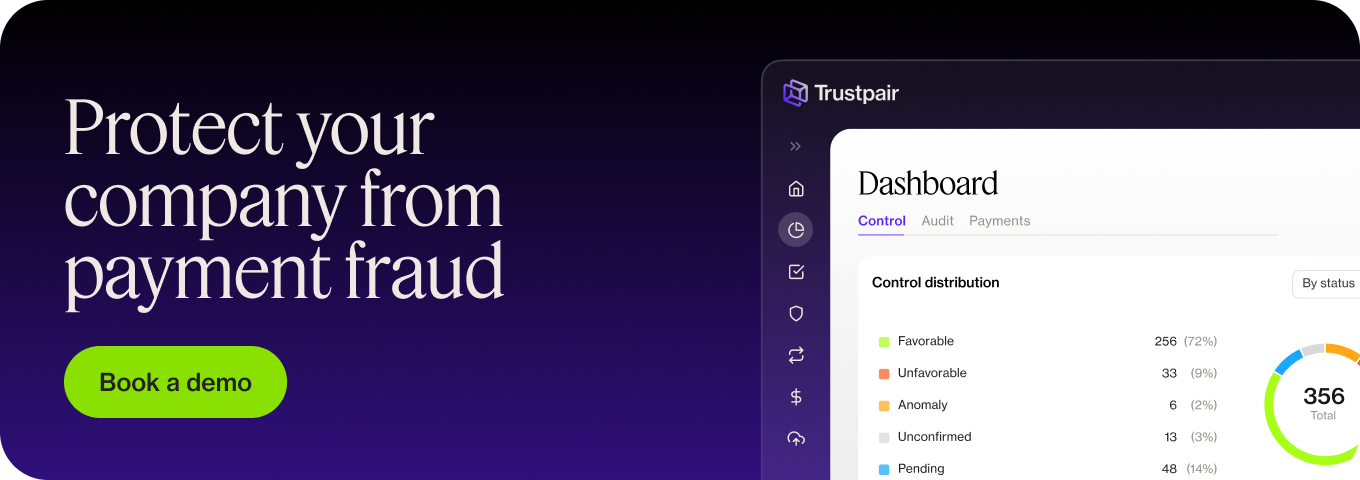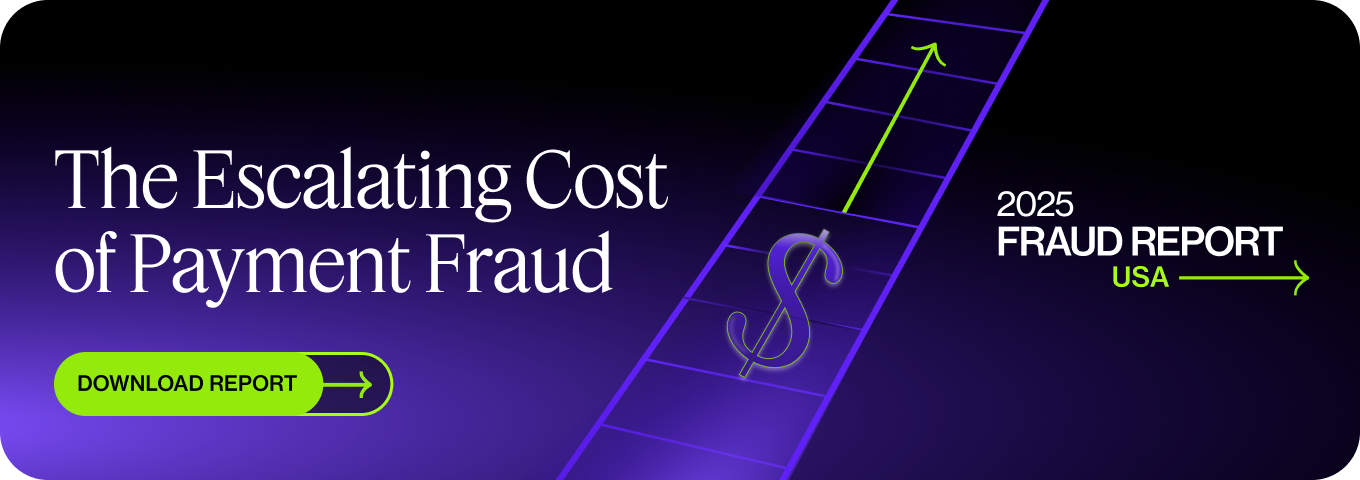For finance functions in every industry, research shows us that at least 42% of all activities can be fully automated, with a further 19% able to be mostly automated. Imagine the time you’d save!
Except, it’s not just time-savings. By digitizing payment processes, procurement, supplier management, and invoicing, your people can make serious gains in operational efficiency. It’s the difference that could help you get ahead of your competitors and generate growth in the coming years.
But what are the trends in finance automation for 2023? In this piece, you’ll learn about some of the most popular finance automation processes and hear from companies that have already made the switch.
Trustpair works with finance departments to overhaul their manual systems. Instead, you’ll walk away with an intuitive automation platform that helps your finance department perform at its best in the fight against fraud. Ask for a demo right away!
What is Finance Automation?
Finance automation refers to the use of technology to complete your business processes. By applying automation, finance tasks become less repetitive and time-consuming for those who work within the function. Plus, finance automation can actually increase your efficiency, productivity, and output.
Trustpair is one example of an automated finance platform. It focuses on payment fraud prevention.
For example, we systematically validate the accounts of your merchants and suppliers and verify your data to ensure they are who they say they are. Checking your outgoing payments thoroughly before they’re executed and preventing interception from fraudsters. Thanks to Trustpair, your finance team saves time and you won’t risk losing money to fraud anymore. It’s a good example of how finance automation can really benefit your business.
Automation platforms, programs, and systems can be applied to almost every task within the finance department, including invoices, payroll and other manual tasks. But applying it without proper human oversight can lead to unwanted consequences. That’s why it’s important to know it’s not about replacing humans, but simply enhancing the way we all work. Finance automation is about generating the time for value-adding tasks.
Benefits of Finance Automation
There are countless benefits of finance automation, but let’s focus on three of the biggest beneficial impacts:
- Time savings
- Reduction in human errors
- Automatic compliance with regulation
Time savings
Did you know that 80% of the tasks that take up three-quarters of working time for finance employees can be completely automated? If done correctly, this means that your day-to-day operations will take approximately one-fifth of the time they usually do.
Time savings are generated through automation in a few different ways:
- Efficiency between integrated systems: enough wasting time copy and pasting your data from one program to another
- Reduced bottlenecking at different stages of a system: stop waiting for manual approvals from managers which take days on end
- Boring tasks done for you: increase productivity by swapping the monotonous humdrum for value-adding work
Let’s take a look at an example.
IBAN numbers cause lots of problems in manual systems because they’re so long, it’s more likely that they contain errors. Moreover, for one employee to check multiple IBANs in a single sitting is not only time-consuming but could lead to unreliable results. The numbers get confusing – but they must be verified to prevent fraudulent payments.
Dehon Group saves approximately 100 hours per month through the automation of merchant details checks. By working with Trustpair, the team now verifies around 100 IBANS each month, taking just two minutes per supplier. Even better than the time-savings, though, is that the Dehon group can rest easy knowing that these results are 100% accurate.
100 hours saved, 100 IBANs checked, 100% accuracy.
Reduction in human errors
Another benefit to using automation in finance is a complete decrease in the risks associated with manual work. Since there’s no manual work, there are also no manual errors. In fact, the only risk of error is in your data itself, with nothing to do with the transfer of this information between your systems.
When you reduce the chances of error in your financial forecasting, your team can create forecasts and budgets with more accuracy. It means you can set expectations early and don’t have to disappoint the stakeholders by announcing you’ve gone over budget.
Fraud Prevention
Automation can have a two-fold impact on the success of fraud attempts within your organization.
Firstly, you can migrate daily tasks over to software for completion, which leaves significantly less room for fraudsters to take advantage. When you replace manual work with automation, the number of vulnerable points within your process decreases. It means that your systems themselves become harder to infiltrate and easier to protect against fraud.
Secondly, you can actually leverage automation software to identify patterns of suspicious behavior. For example, Trustpair’s vendor data management product verifies the details of your third-party suppliers against real bank database information. Moreover, you can track vendor financial activity over time to spot ‘out of place’ transactions in real time. This way, you’ll avoid sending funds to scam vendors, or real companies that have been defrauded.
Do you want to learn more about fraud prevention? Check out our latest trend report about fraud in the US.
Automatic compliance with regulation
Finance department roles range from monitoring customer activities to delivering accounting documents for the end of the tax year. Of course, a huge part of your role in finance is centered around compliance for documentation (like contract management), reporting and general financial regulations.
But just like the other processes we’ve mentioned so far, many of these responsibilities can be automated. It means that regulatory compliance becomes ‘done-for-you’, without a constant need to scan the regulatory horizon.
Let’s take SOX Law as an example.
On a very basic level, it requires finance executives in publicly traded companies to disclose certain activities and produce regular financial reports. Such regulation aims to increase transparency among financial activities and rebuild industry trust after a scandalous millennium.
But you can actually automate some of the 11 requirements for SOX Law. For example, you can prove that you’re monitoring ongoing changes by using horizon-scanning technology (to show you what’s around the corner, before it happens). Moreover, you could build a risk assessment through a digital program, and take advantage of APIs to update it consistently.
By automating your process management, compliance with regulations has never been easier.
Examples of Finance Automation
Here are some real-life case studies of companies that have benefitted from automation within finances.
Leaseplan’s automated bank detail checks
Leaseplan operates a long-term car rental fleet in different global locations. With over 2000 third parties, it was hard for the finance department to find the time to verify the bank’s details of their suppliers for each and every payment. But the team knew that without these checks, fraudsters could get away without a hint of detection.
Leaseplan partnered with Trustpair to automatically check the bank details of each of its 2000 vendors. Technically, this overhaul included the introduction of robotic process automation (RPA) to integrate Leaseplan’s procurement portal with Trustpair’s technology. It meant the introduction of agile and intelligent automation software for digital transformation.
The result?
A 100% operational custom-built API within two months, significant hours saved, and complete peace of mind in the security of data. Leaseplan’s financial department is now replicating this for other financial processes to reap the rewards in all areas, too.
Keys Asset Management’s automated payment processing
Keys Asset Management specializes in the investment and ongoing management of real estate investment funds (REITs) on behalf of investors. The finance department struggled to actually secure the payment process since the team made multiple bank transfers to merchants every single day.
So, the team chose to automate their payment process for more secure payments. Specifically, this meant Trustpair built a native connector for Allmybanks, which held the data for suppliers’ payment details.
This integration means that Keys Asset Management benefits from an automatically cleaned master file – so vendor data isn’t duplicated or missing. Plus, approvers have total confidence in payment requests, providing reassurance.
The team stated, “It makes adding and modifying beneficiaries more reliable without resorting to manual processes that are cumbersome, time-consuming, and fallible”.
How to Implement Finance Automation in Your Finance Operations
Generally speaking, you can start to implement finance automation as soon as you’ve audited your current processes. Simply make a list of each of the daily tasks, and take note of the potential process improvement.
Then comes the fun bit – searching for the right technology to fit the bill. There are many automation solutions to choose between, using technologies like robotics and artificial intelligence. Of course, you’ll want to consider capabilities, whether a program can integrate with your other third parties and pricing.
Here’s a suggestion for the criteria you should take into consideration:
- Ergonomics of the solution (are your team on the ground feeling comfortable with the chosen tools?)
- Technical features (can you achieve what you need to? Are there customization options, built-in APIs for integration, dashboard and real-time data flows, for example?)
- Pricing (as they say – buy cheap, buy twice, it’s always better to invest in the right fit than to sign up for a subscription with a cheaper solution that has to be changed)
- Scalability (your business is likely to grow, but will the software adapt?)
Trustpair brings automation to your fraud prevention processes.
We deploy customized automation solutions for medium and enterprise-level businesses across the USA (and the rest of the world). Our process digitization approach doesn’t just save you time – it enables your team to gain more control over their finances, too.
We can help you automate risk management, procure-to-pay, vendor bank detail checks, and more. Connect Trustpair using our smart integration tools to secure your payment chain from beginning to end. Ask for a demo right away!
To conclude:
- An automation tool in finance refers to any way that machines take the load off human, manual processes. For example, the likes of integrations between apps, machine learning technology, bots and scripting that transfers your financial data to the right programs
- Automating processes in the financial department can save time, simplify workflows and increase your scalability
- Executing a digital transformation should start with use cases, consideration for the customer experience, and your team’s needs (ie user interface)






